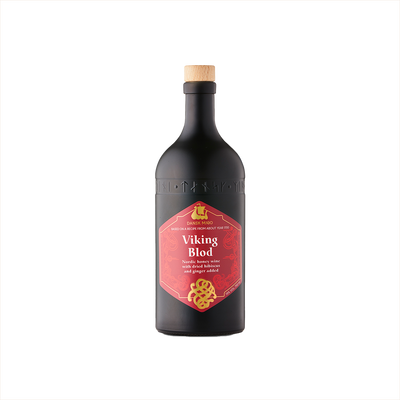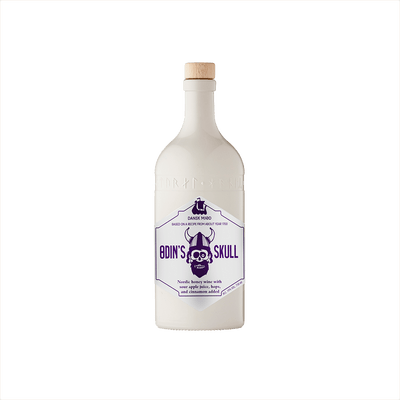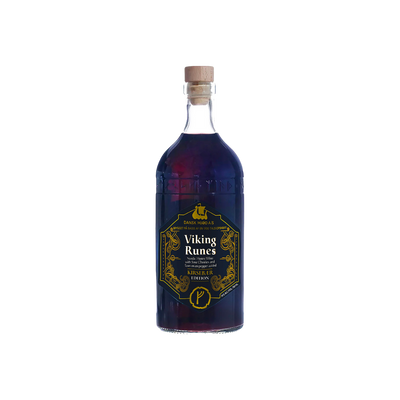Other Mead
What is Other Mead?
Other Mead represents a catch-all category within the Mead classification system for honey wines that don't fit neatly into traditional styles like metheglin, melomel, or cyser. This category includes experimental meads made with unusual ingredients such as vegetables, cheeses, meats, or other non-standard additives that push the boundaries of conventional mead-making. Other Mead also encompasses hybrid styles that combine multiple mead types or use innovative fermentation techniques that create entirely new flavor profiles.
Learn More About Other Mead
What makes Other Mead unique?
Other Mead stands apart as the catch-all category for innovative meadmakers who refuse to stay within traditional boundaries, blending honey wine with unexpected ingredients like hops, spices, or even tea leaves that don't fit neatly into established styles. These experimental meads often push creative limits by incorporating multiple adjuncts or using unconventional fermentation techniques that create entirely new flavor profiles. What makes this category special is its spirit of invention – each bottle represents a meadmaker's unique vision rather than adherence to historical recipes or regional traditions.
How is Other Mead made?
Other meads start with the same basic foundation as traditional honey wine—fermenting honey with water and yeast—but then branch off into creative territory by incorporating additional ingredients during or after fermentation. Fruit meads (melomels) get their character from berries, stone fruits, or citrus added either during primary fermentation for deeper integration or afterward for brighter flavors. Spice meads (methaglins) follow a similar approach, with herbs, spices, or botanicals introduced at various stages depending on whether the meadmaker wants subtle background notes or bold, prominent flavors that define the finished product.
How do you drink Other Mead?
Mead shines brightest when sipped neat at cellar temperature, allowing its honey character and any fruit or spice additions to fully express themselves on your palate. While some people enjoy it chilled or over ice during warmer months, mead also works beautifully in cocktails as a substitute for wine or liqueurs—think mead sangrias, spritzers with sparkling water, or mixed with bourbon for an ancient-meets-modern sipper. The cooler months and cozy gatherings are mead's natural home, making it perfect for holiday celebrations, fireside evenings, or any time you want to channel a bit of medieval magic into your glass.
How do I choose a good Other Mead?
Start by considering the honey source and style—wildflower meads offer complexity while single-varietal options like orange blossom or clover provide distinct flavor profiles that can complement or contrast with your intended cocktail ingredients. For mixing, look for meads with balanced sweetness and acidity rather than overly sweet dessert styles, as they'll integrate better with spirits and citrus without overwhelming other flavors. Traditional still meads work beautifully in stirred cocktails with whiskey or brandy, while sparkling meads can add effervescence and floral notes to lighter drinks with gin or vodka.
Nutritional Information
Typical Calorie Range per Ounce: 25-35 calories
Typical Carbohydrate Range per Ounce: 2-6 grams
Typical Sugar Range per Ounce: 1-5 grams
Typically Gluten Free: Yes
Most traditional meads are naturally gluten-free since they're made from honey, water, and yeast. Some specialty meads may include grains or other ingredients that contain gluten, so always check the specific product label and manufacturing details to confirm gluten-free status if you have celiac disease or gluten sensitivity.
Scrolled this far? Your reward? Other Mead Trivia!
- Ancient Ethiopian mead called tej is traditionally made with wild honey and a mysterious plant called gesho that acts as both a bittering agent and natural preservative. The recipe has remained virtually unchanged for over 4,000 years, making it quite possibly the oldest continuously produced alcoholic beverage still made today using the exact same methods.
- Polish mead comes in five distinct strength categories based on honey-to-water ratios, with the strongest called czwórniak (four-parts mead) containing four parts honey to one part water. This creates a dessert wine-strength mead at around 16-18% alcohol that was historically reserved for royalty and special ceremonies.
- Viking mead halls weren't just about drinking - they used a special drinking horn ritual where the mead had to be consumed in one continuous draft because you couldn't set the horn down without spilling. This led to the practice of "horn passing" where each person would drink their fill and pass it on, creating a communal bonding experience that could last all night.
- Modern meadmakers in Vermont have discovered that maple syrup mead (called acerglyn) develops completely different flavor profiles depending on which grade of maple syrup is used. Grade A Light creates a delicate, almost champagne-like mead, while Grade A Dark produces rich, bourbon-barrel notes - all from the same base honey recipe.
- Traditional Russian mead called medovukha was historically made using a "perpetual method" where new honey and water were continuously added to the same fermenting vessel for decades. Some monastery operations maintained the same mother culture for over 100 years, creating incredibly complex flavor profiles that modern meadmakers are still trying to replicate.
Higher-proof spirits can be intense. Mix carefully, taste thoughtfully, and enjoy responsibly.
Gift message (optional)




